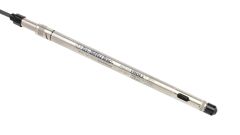

Overview
A Southern California groundwater management agency is capitalizing on the latest remote water monitoring technology to simplify and expand access to continuous groundwater data used to ensure a sustainable water future for its service area.
Challenge
The Water Replenishment District (WRD) is responsible for monitoring and testing groundwater throughout a 420-square-mile region of southern Los Angeles County, the most populated county in the U.S.
As the region’s groundwater management agency, WRD has worked for decades to end reliance on imported water and ensure that a reliable supply of high-quality local groundwater is available through replenishment with recycled water and stormwater capture. Key to this effort is reliable access to a continuous stream of groundwater monitoring data for timely resource management.
Solution
To monitor a groundwater system that includes much of the Central Basin and all of the West Coast Basin (CBWCB), the agency’s Regional Groundwater Monitoring Program (RGWMP) consists of a network of 347 monitoring wells at 62 locations.
Nearly all of these wells are equipped with In-Situ Level TROLL 500s or Aqua TROLL 200s to record data on water level, pressure, temperature and conductivity. By using nested wells—one monitoring location with one large borehole that holds multiple well casings, each with screen intervals at distinct depths to target specific aquifers—WRD has been able to collect a wealth of data from a manageable number of sites.
“This is how we’ve been able to learn so much about the basins,” says WRD Associate Hydrogeologist Moises Santillan. “These wells and the dataloggers we use are the backbone of our data collection. We program the equipment to collect four readings a day from each well, and with that data we’re able to conduct our scientific analysis, which includes tracking seasonal and long-term water level trends.”
WRD’s RGWMP has monitored groundwater elevation and water quality conditions in the CBWCB since 1996, with a mission to better understand and maintain sustainable groundwater resources in the service area.
“With the ongoing drought continuing to impact our region, understanding the health of our basins has never been more crucial,” says Santillan.
He adds that until about five years ago, staff would go out to each well location with a laptop four times a year and download the data. They then transitioned the most key wells to In-Situ’s Cube and Tube telemetry setup. And when In-Situ introduced VuLink telemetry, WRD quickly made the switch.
“As of early 2022, we have installed VuLinks at more than 40 of our sites to report data from our existing Level and Aqua TROLL network,” Santillan says. “Now a lot of our sites will be visited less often over time, since the data comes straight into the HydroVu platform, and we access and analyze it from there.
“HydroVu is one of the main hubs where we view and extract our data,” he adds. “It complements the agency’s database, and it’s very easy to use. I’m able to go in and see what I need to see with a few clicks, easily share it with people and get them up to speed quickly. It’s very important to us.”
Santillan says the District has also added the Aqua TROLL 500 multiparameter sonde to its inventory to assist with the monitoring of water quality during groundwater purging and sampling events. Data on DO, pH, ORP, temperature, conductivity, TDS and turbidity helps support EPA reporting requirements and sustainability efforts.
Results
In-Situ’s shared ecosystem of equipment and software, in which dataloggers, cellular telemetry and data services work together to automatically collect, transmit and display data, is integral to the District’s monitoring work.
“We’ve used In-Situ equipment for decades going back to the Hermit 3000 and the original transducer,” Santillan says. “The company has always been ahead of the curve, most recently with telemetry that’s 2G, 3G and 4G compatible. When I learned that programming the VuLink in the field can all be done using my cellphone, I couldn’t believe it; it’s really that simple.
“This equipment will save us a lot of trips to the wells,” Santillan adds. “And while we’ve invested quite a bit into expanding our equipment inventories, we’ve gotten a lot of critical benefits in return.”








